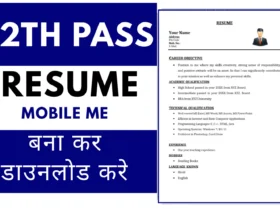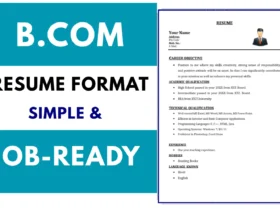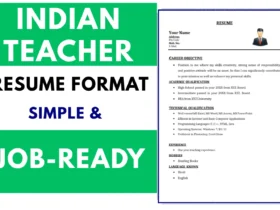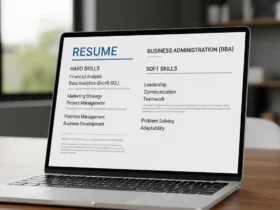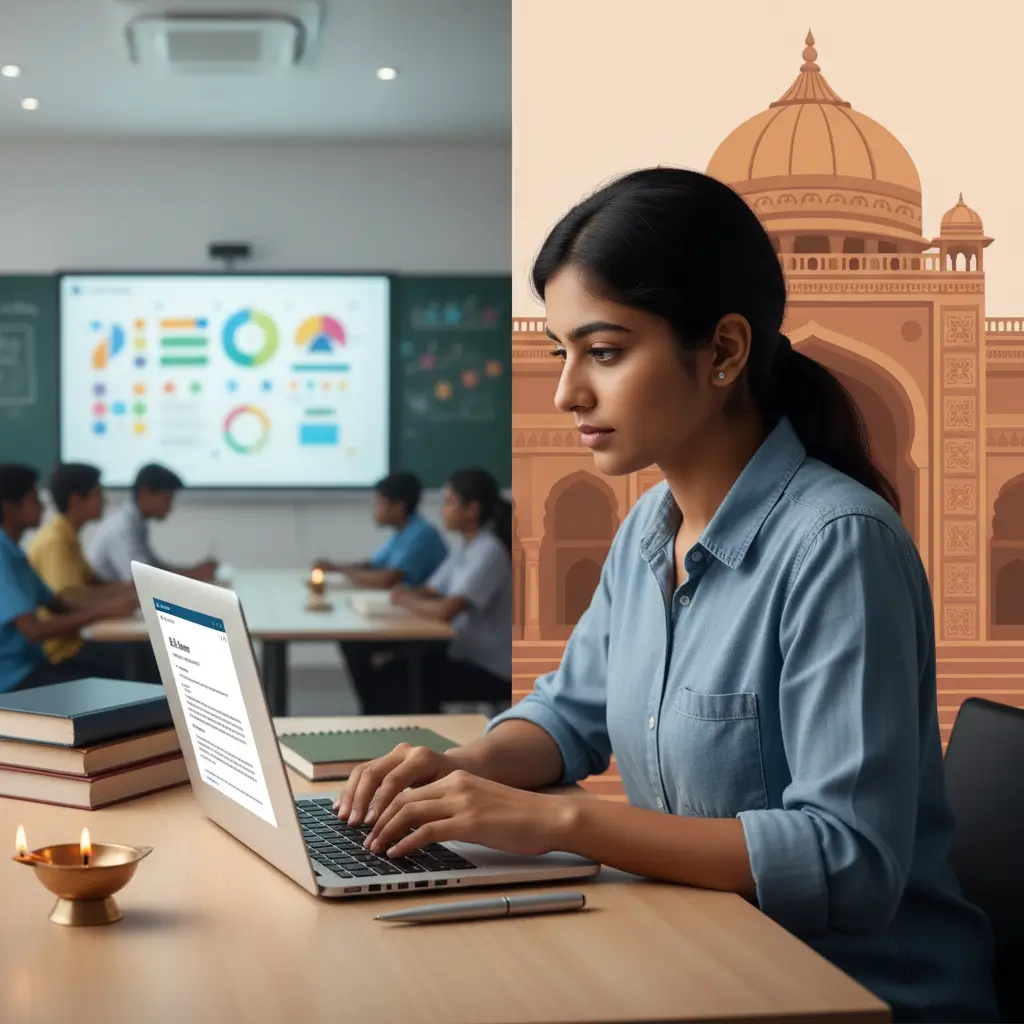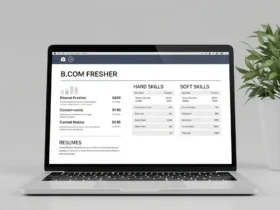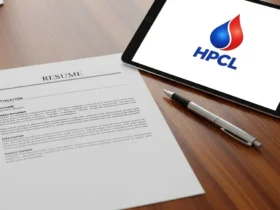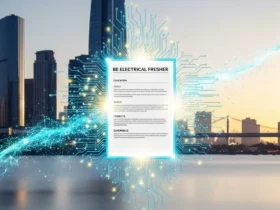Hey future teachers! Dream of standing in a classroom, sharing knowledge, and making a difference? In India, teaching is a respected path. It’s not just a job; it’s a way to shape young minds. Before you get there, you need a finely put together B.Ed resume. Think of your resume as your first impression, a quick story about why you’d be a cool teacher. We’ll look at how to make it special for schools here in India, from showing your abilities to including details that matter. Let’s get your teaching journey going with a resume that truly shows you.
An Overview
So, what goes into a B.Ed resume that gets noticed in India? It’s more than just a list of degrees. We’ll go through each part. First, your contact info should be at the top, simple and clear: your full name, phone number, and a proper email address. You can also add your home address and a link to your LinkedIn page if you have one. Then comes your career aim or a quick summary about you. For those just starting, this is where you say what you hope to do and how you can help students learn. For those with some practice, it’s a few lines about what you’ve done and what you bring to a school.
Next, list your school record in reverse order, starting with your B.Ed. Include the college or university, when you finished, and your marks. Don’t forget your undergraduate degree (like B.A. or B.Sc.) and your 10th and 12th board results from your CBSE or State board.
Practice teaching or any work experience comes next. This is where you talk about what you did in real classrooms. Did you help plan lessons? Work with students one-on-one? Arrange school events, perhaps even the annual day or a sports meet? Use action words to tell your story, like “assisted in lesson preparation” or “guided students with homework.”
Your abilities section is where you show off what you can do. This means teaching abilities like planning lessons and keeping a class calm, and also computer abilities like using MS Office (Word, Excel, PowerPoint) or Google Classroom. Don’t forget friendly traits like being patient, a good listener, and a team player. Finally, some personal bits are common in India, like your parents’ names, date of birth, gender, marital status, nationality (Indian), and languages you speak (Hindi, English, plus any local languages like Marathi or Tamil). We’ll show you how to set it up so it’s easy to read and tells your story clearly. Imagine it as your own personal yearbook page, but for grown-up jobs!
Sample B.Ed Resume Format (Easy to Copy)
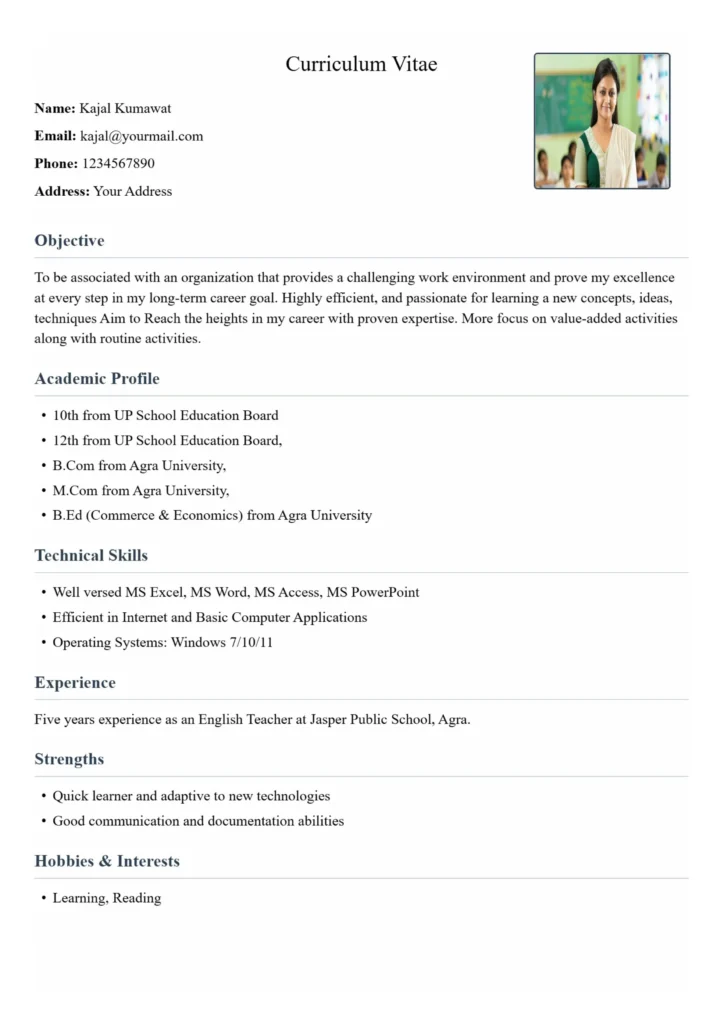
👉 Download Link: [Get Here]
👉 Indian Teacher Resume Format
You can:
- Fill it in Adobe or any PDF app
- Print it on clean A4 paper
How Resumes for Teachers Have Changed
Ever wonder how resumes for teachers used to look? A long time ago, like when your grandparents were young, teacher job applications in India often looked different. Back before the 1990s, resumes (sometimes called Curriculum Vitae or CVs) for those wanting to teach were usually longer and packed with personal details. You might have seen the candidate’s full name, father’s name, mother’s name, birthday, gender, marital status, and where they lived.
Sometimes, even a photo was added, not like the small passport photos we use now. These older papers focused a lot on academic grades and what degrees you had, in order, from the oldest to the newest. There wasn’t much talk about specific teaching tricks or using computers, as those were not common back then.
Teacher training itself has a long history in India, with the first formal teaching schools popping up in the early 1800s in places like Madras. Over the years, leaders in education, like the Kothari Commission in the 1960s, looked closely at how teachers were taught. They pushed for teacher training to be a continuous learning process, not just a one-time course. This meant keeping up with new ideas and ways of teaching.
As India changed after the 1990s, especially with more computers around, resumes started to change too. It became simpler to type and change resumes using software like Microsoft Word. People started sending resumes by email, which was a big shift. This was the start of thinking about what a teacher could do in the classroom, not just what they studied.
Groups like the National Council for Teacher Education (NCTE) set rules for teacher courses, making resumes more organized and focused on how a teacher could achieve positive results in class. This path has led us to today, where resumes for teachers are much more about abilities, quick looks at what you can do, and how well you fit into a modern school setting.
What Schools Look for Today
What do schools in India look for right now in a B.Ed resume? Today, schools want teachers who can do much more than just teach from a book. They look for practical abilities and how well you can connect with students. This includes being able to plan lessons that grab students’ attention, keep the class running smoothly, and guide students beyond just their studies.
Schools also really like to see that you have done some practice teaching. When you talk about your practice teaching, explain exactly what you did, like making lessons, helping students learn, or organizing school events. Maybe you used a visual aid in your practice class that made a topic clearer, or perhaps you helped a shy student participate more.
It’s also very helpful to know about new education ideas. For example, the National Education Policy (NEP) 2020 talks about learning that helps you grow all-around, focusing on critical thinking and real-world abilities. Showing you understand these things on your resume tells schools you are up to date. Many schools also like teachers who communicate well with both students and and have a friendly nature.
Passing exams like the Central Teacher Eligibility Test (CTET) or State Teacher Eligibility Tests (TETs) is a very big deal, especially if you hope for a job in a government school. Mentioning these on your resume shows you are serious and ready. Also, with online learning becoming so common, showing that you can use digital tools like tablets, smartboards, Google Classroom, or Zoom makes you a much more appealing candidate. Your B.Ed resume format for new teachers in India should truly show you’re a modern teacher, ready for today’s students in India.
Things That Are Not So Easy
Becoming a teacher in India has its tough parts, and it’s good to be aware of them. Getting a job in a government school can be really hard because so many people apply. You often need to pass difficult tests and face a lot of competition. Private schools might hire more easily, but sometimes the pay is not as high as in government schools.
New teachers also face other difficulties. You might need to learn how to manage a big class of students, which can be a real task, especially if you have students from different backgrounds or who learn in different ways. Finding enough teaching materials and learning tools, especially in smaller towns or villages, can also be a puzzle. Learning to teach with new technology while also using traditional ways that schools are used to can feel like a balancing act. Sometimes, older ideas about how teaching should be done can clash with new, more lively ways of teaching.
Your resume can gently show that you are ready for these situations. For example, by mentioning your experience with different teaching methods or your willingness to learn new technologies, you signal that you are adaptable. Showing your patience and ability to solve problems, even if they come up during your practice teaching, can make a difference. The world of education is always changing, and teachers need to keep learning and growing their abilities all the time to keep up with new ideas and needs. Your Indian B.Ed teacher resume examples should reflect your readiness to overcome these common challenges.
What’s Next for Teaching in India
The future for B.Ed graduates in India looks bright and full of new ways to teach. The need for good teachers is always present, and with more schools opening across the country, from big cities to smaller towns, there will be many opportunities. The NEP 2020 has a big plan: by 2030, it wants all school teachers to have a four-year integrated B.Ed degree. This means teacher education will be even deeper and cover more ground.
Online learning has become a huge part of education, especially after recent global events. So, being good with digital tools like Google Classroom, Zoom, or even making engaging presentations will make you a very sought-after teacher. You might even teach students who live far away, connecting with them through virtual classrooms. This online teaching skills for B.Ed graduates is a big plus.
Beyond just teaching in a regular classroom, your B.Ed degree can open up many other paths. You could work on making study materials for online platforms or books, advise schools on what topics to teach, or help kids who have special learning needs. Some B.Ed graduates even start their own coaching centers or become subject experts for educational companies.
Imagine teaching students from all over India through online classes, or working to create fun learning apps. These are all possibilities for B.Ed graduates. Your B.Ed degree can truly open up so many paths to shape the future of learning in India. Knowing career goals for B.Ed resume India can help you steer your path.
Making Your Resume Shine
Making a fine B.Ed resume is a big step toward your teaching dream in India. Think of it as painting a picture of your best self for schools to see. Here’s a quick reminder of how to make a B.Ed resume in India:
- Be Clear and Clean: Keep your resume easy to read. Use simple fonts and leave some empty space so it doesn’t look too crowded. For new teachers, one page is usually enough.
- Show Your Goals: Your career aim should tell schools what kind of teacher you want to be and what you hope to achieve for your students.
- List All Your Education: Put all your degrees and school results, starting with your most recent one. Don’t forget any teacher eligibility tests like CTET or TET.
- Talk About Experience: Even if it’s just practice teaching (internship), describe what you did in the classroom. Did you help students, create lessons, or manage a group? Use words that show you were active.
- Highlight Your Abilities: This is where you list both your teaching abilities (like planning and classroom control) and your computer abilities (like MS Office and online tools). Also, mention friendly traits like being patient, a good listener, and a team player. These skills for Indian B.Ed teachers are much liked.
- Add Indian Details: Include personal information like your father’s and mother’s names, date of birth, and languages you know, as this is common in India.
- Tell About Achievements: Did you win any school competitions, get an award during your internship, or lead a school club? These bits show your extra dedication.
- Proofread, Proofread, Proofread: Read your resume many times to catch any mistakes. Ask a friend or family member to read it too. This will help you make a B.Ed resume format for new teachers India that truly shows you.
By putting in your abilities, your practice teaching, and a touch of your personality, you can build a resume that truly stands out. Remember to add those important Indian details and show how you’re ready for the modern classroom. You have a chance to change lives, and it all starts with this one paper.

